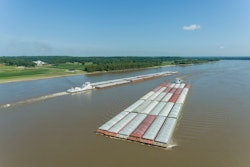
It’s an unpleasant truth that the agricultural industry, as it operates today, is not sustainable. In the United States, current farming practices have led to the annual loss of hundreds of millions of tons of soil — 10 times the normal rate of erosion. Meanwhile, the use of chemical fertilizers in soy and corn, two of America’s largest crops, has increased significantly, damaging the condition of the water and earth in surrounding areas. Commonly used pesticides also continue to damage the health of the land.
The trend of massive corporate farms that cover huge swaths of land also presents its own problems to sustainability. Larger farms tend to cause greater harm to biodiversity than their smaller counterparts. Biodiversity is not only important for maintaining fertile soil, but it also improves an area’s ability to handle change and events like flooding or droughts — an increasingly important characteristic as the effects of climate change continue to intensify.
It’s not just the farms themselves that cause issues, either. The infrastructure that supports modern farming is also unsustainable. Modern agricultural practices are responsible for 30% of global greenhouse gas emissions. That includes everything from taking care of livestock to planting and processing crops to transporting all of it around the world.
This lack of sustainability isn’t the result of a single decision or some cohesive master plan. Rather, it’s the outcome of the agricultural industry’s gradual transformation from locally owned farms that primarily served their own region to large global conglomerates that try to reach as many people as possible, regardless of geography.
Does that mean, then, that the solution to farming’s sustainability problem is to go back to the model of the past? Not quite. While moving back to old-fashioned farms would most likely help improve agriculture’s negative impact on the environment, keeping up with a growing world population would be extremely difficult, if not impossible.
Instead, to move forward into a healthier, more sustainable future that still meets the needs of today, we need to look both back into the past and forward into the future to find a solution. With the help of artificial intelligence (AI), it’s possible for farming to become smaller, smarter and more sustainable.
How micro-farming can meet the needs of the present and the future
There’s no question that something was lost when farming went big. It created a disconnect between the people who produced food and the people who consumed it. The move away from locally sourced produce was a blow to many communities and local economies. Bringing back smaller farms that directly serve the nearby population would help revitalize these communities and improve the quality of produce and sustainability.
Small and medium-sized farms are more efficient than their larger counterparts and average a higher yield per unit of land. That’s because these farms rarely specialize in a single crop; instead, they rotate crops and livestock, maintaining production throughout the year and keeping the soil healthier in the process. Smaller local farms would also mean smaller food networks, which would significantly reduce transportation costs and the industry’s overall emissions.
However, the answer to modern farming woes isn’t to just go back to the old-fashioned way of farming. With the traditional approach, it’s not always clear what will see the highest demand each year. This can leave farmers with either too much or too little produce at the end of the day. Plus, while smaller than the company-owned farms of today, traditional farm layouts still tend to be fairly sizable, which means that maintaining biodiversity and weathering environmental events like droughts or floods would still present major difficulties.
The future of AI in agriculture
How can AI enable a sustainable future? Instead of simply replicating the old model, the industry should try to go even smaller by investing in micro-farms. These are closed, vertically built farms designed to serve the local population. The goal of these farms isn’t to produce a large amount of produce in one season; instead, the goal is to deliver smaller amounts on a monthly — or even weekly — schedule, based on consumer demand. While this might not have been feasible in the past, AI food waste management makes this possible through demand-forecasting algorithms. Using food waste reduction technology, farmers can more accurately calculate what consumers will buy, making it possible to ensure sufficient produce for customers and reduce the chances of waste.
Efficiency isn’t the only advantage of the micro-farm. Because it’s a closed, controlled environment, there's no need to rely on chemical pesticides or herbicides. AI models can learn the exact timing to plant seedlings, provide light and water and control temperature and humidity to maximize growth and improve taste. Biologists are also beginning to use powerful AI models to create nutrient-packed vegetables that can provide more nutrition with a lower ecological footprint. Climate events, too, no longer present an existential threat. Water can be easily reused, making these farms drought-friendly. The vertical construction, meanwhile, shrinks land use down to a size that keeps biodiversity intact and maintains its ability to effectively capture carbon, which helps the planet fight global warming.
With today’s farming methods, it’s only a matter of time before something gives. To prevent this from happening, the agricultural industry needs to invest in a model built for sustainability. Micro-farms can be the solution that farming needs. Not only would they cause less harm to the land they rely on; they would create stronger communities, improve food security and deliver fresher, better-tasting produce.


















